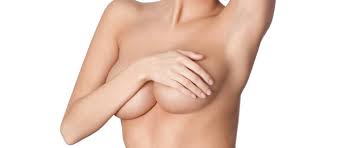
In 2012, more than 330,000 women in the United States elected to have breast augmentation surgery; worldwide, that number exceeded 1.5 million. Although media coverage suggests otherwise, only a minute percentage of the women who get breast implants are actresses and models. They come from all walks of life; they include policewomen and CEOs, teachers and soldiers, young mothers and nurses.
About 30 percent of the women who get breast implants are in their 20s. They often report being self-conscious about their lack of development or embarrassed about their breasts being asymmetrical or uneven. About 35 percent are women in their thirties, many of whom lost breast volume after childbirth. Some want to recapture their pre-pregnancy breast size, while others liked the breast fullness they had during pregnancy and want to recreate it with implants.
Whether women are having cosmetic breast surgery (augmentation, lift or reduction) or reconstructive surgery after a mastectomy, their goals are similar: They want to look feminine, natural and proportional. They want their clothes to fit better.
In consultation, women ask dozens of questions about the safety, durability and longevity of saline and silicone gel implants – the two types that are approved for sale by the U.S. Food and Drug Administration.

Posts
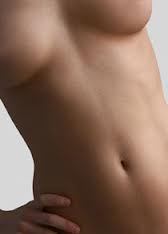
Breast augmentation surgery may be a surefire way to get the breasts you ultimately desire, but when it comes to making decisions, there are a variety of factors to take into consideration. A properly trained plastic surgeon should be able to guide you through your decision-making process. One of those decisions will be if your implants should go over or under the muscle. So, what’ the difference?
Subglandular: Over the Muscle
The upside: Since the implant is placed over the pectoral muscle and below the breast tissue, recovery time is usually shorter because there is fewer traumas to the underlying tissues. Placing the implant over the muscle can also give a slightly lifted look.
The downside: The implant sits closer to the surface of the skin, making it more detectable through touch and more visible if your skin is thin. In a mammogram, additional views may be necessary.
Silicone implants allow for more patients to have their implant placed subglandularly (in front of the muscle) because there is less rippling and visibility with silicone.
Submuscular: Under The Muscle
The upside: Positioning the implant below both the pectoral muscle and the breast tissue allows for the implant to be less visible and act as an internal bra, keeping the implant in place. The implant is also only partially covered by muscle, so it’s less likely to cause problems with mammograms.
The downside: It’s a more painful recovery because the internal anatomy of the tissue behind the breast is hanged more.
Placing the implant under the muscle is good for those who are thin because it provides extra coverage over the implant, which gives a more natural look.
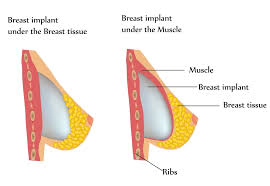
Breast augmentation helps women with small or unevenly-sized breasts achieve a fuller, firmer and better-proportioned look through the placement of breast implants. Women may elect to undergo this procedure for many different reasons, including balancing breast size and compensating for reduced breast mass after pregnancy or surgery.
During your breast augmentation exam, Dr. Bishara will examine your breasts and perhaps take photographs for your medical record. Dr. Bishara will then examine the size and shape of your breasts for Breast augmentation surgery, the quality of your skin and the placement of your nipple and areola. Also, a breast lift may be recommended with the breast augmentation. Please call our office at (817) 473-2120 or click on the link below. You can also visit us on our website at www.MarkBisharaMD.com and our Facebook page at Paragon Plastic Surgery and Med Spa at www.facebook.com/pages/Paragon-Plastic-Surgery-and-Medspa

Breast enhancement is of course the act of having your breasts augmented in order to appear larger and firmer. This means having them filled with some substance other than the fat that would normally be there naturally in order to both pad them and make them more buoyant and stretch the skin around them more tightly. This is achieved in several different ways and there are various different methods of breast enhancement. Knowing precisely what you are signing yourself up for before you get the breast enhancement is highly important and will help you also to decide on precisely which procedure is right for you. Here we will have a brief overview of the subject of breast enhancement.
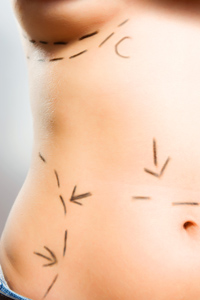
Why Breast Enhancement? There are many reasons why people will choose breast enhancement, but generally they will be cosmetic. Breasts are often considered one of the female features that men find most attractive, and so by having a pair of pert and full breasts a woman can feel confident and attractive. It is thought that men find breasts attractive because they suggest that the woman is fertile and able to provide healthy offspring and then to look after them. Because breasts are such an important part of the female physique, many clothes depend on the woman having large or perky breasts. Meanwhile many other tops make use of a good cleavage while others just look better for it. Meanwhile breasts have the effect of improving the appearance of the rest of your physique. They achieve this by making other areas seem comparatively smaller. For instance if you are concerned about the size of your stomach and you think it sticks out – then by getting breast enlargement it is possible to make this look relatively flat, and particularly when underneath certain clothing. The idea is then that a woman will feel womanly, can enjoy a better silhouette and can get away with wearing more different clothes all as a result of having a fuller pair of breasts. This will then make them feel more confident and often in some cases happier. Furthermore, it can help them to find partners both as a result of the breasts themselves and because of the new found confidence and it can even help in their careers. Of course in some cases breast enhancement techniques will be used to repair damage that might have been done by an injury or by disease or necessary surgical procedure. In these cases the techniques are used to try and return the breasts to their previous shape and size rather than to in any way augment them – and as a result these methods are not always referred to as ‘enhancement’.
This information is brought to you courtesy of Dr. Mark Bishara and The Paragon Plastic Surgery & Med Spa in Mansfield and Southlake, TX

Your Choices of Breast Enhancement
Breast surgery has been around for more than a century. Each year an increasing number of women opt for cosmetic breast surgery, mainly augmentation (to enlarger size) surgery.
If you have thought long and hard about breast augmentation and have decided you want it, then you will next need to decide on what form of augmentation. Here there are two particularly popular forms of implants which are explained below:
Implants (Silicone or Saline)
Implants are perhaps the more common form of breast enhancement. These involve implanting a foreign object into the breasts as ‘fillers’ to pad these out. These implants can be placed wither directly below the skin, or can be ‘submuscular’ (which is recommended for those who already have larger breasts) and this will make some difference to the appearance. At the same time there are different types of implants that can be used, though most often silicone implants are used. While saline implants (bags filled with a mixture of salt and water) can also be effective and have their own advantages, these are more prone to aesthetic problems which can include rippling and other problems.

History of cosmetic breast surgery
Breast augmentation surgery involves placing of a silicone gel-filled implant in the intrices of breasts with the aim to enhance size.
Implants made of different materials have been tried in the past; use of silicone implants began in 1962. The commonest kind of breast implants used today are saline and silicone implants.
• Saline implants – as the name suggests, these are filled with sterile salt water which is either pre-filled or can be filled in at the time of the procedure. Saline implants requires a smaller incision (as compared to silicone implants) – this is usually taken under the crease of the breast or the armpit and thus is very hard to detect.
• Silicone gel-filled implants – are made of a silicone gel and come only in pre-filled variety. Although, these require a much larger incisions, they are much safer than the saline ones – chances of an infection greatly decrease with silicone based implants.
This information is brought to you courtesy of Dr. Mark Bishara and The Paragon Plastic Surgery & Med Spa

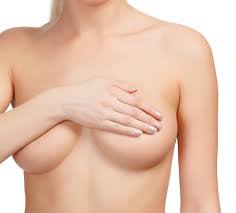
Sign up for a Consultation or Ask Dr Bishara a Question?
Breast augmentation surgery, also known as augmentation mammoplasty, involves enlarging or reshaping the breast with the use of an implant. If you are thinking about getting breast augmentation surgery, there are a few things you should know before embarking on the process. The first thing is to not be intimidated by the word “surgery”. This type of cosmetic enhancement is one of the most common types of procedures performed in the United States, with thousands of women having breast augmentation done every year.
The first step is to consult with your doctor about the nature of the procedure.
Matters discussed and questions asked during a typical consultation include:
- What are the respective benefits of silicone and saline implants?
- What type of anesthesia will be used?
- The doctor’s level of experience (how many breast augmentation procedures do they perform every year?)
- What is to be expected immediately after the procedure?
- How often do they have to reoperate?
- What kind of scarring is to be expected from a breast augmentation procedure?
About Implants
Silicone implants are considered to be more realistic in that the gel with which they are filled has a similar consistency to breast tissue. Saline implants are firmer and filled with salt water instead of gel. While there is the potential for a silicone gel implant to rupture as a result of an injury, this is a rare event. If it does rupture, the silicone should remain within the implant shell or move to the implant pocket. If a saline implant ruptures, its contents will be absorbed by the body.

The Surgery Itself
The factors governing the placement of the incision include the size of the implant, and your body-type. The incision may be placed in a number of areas including under your breast or arm, around your nipple. The incision may be placed through a mastectomy scar if the implant is being used to reconstruct your breast after mastectomy surgery. Dr Bishara will lift your skin tissue to create a pocket into which the implant will be inserted. After the implant is in place, the incisions will be closed by suturing the breast tissue and then using sutures, skin adhesive or surgical tape used to close the incision in the skin.
The Recovery Process Following Breast Augmentation Surgery
Immediately after breast augmentation surgery, your breasts will be covered in gauze, or you will be provided with a surgical bra. You will be taken to an observation area, where you will be observed for any possible post-surgical complications. Recovery after breast implant surgery will usually take 24 to 48 hours. You will be prescribed medications to help with any nausea or pain. Your doctor will tell you how to care for your wound and during follow-up visits, advise you on when you can return to regular activities like work and exercise.
Dr. Mark Bishara provides a wide range of cosmetic procedures to help patients look and feel their best. These procedures are designed to improve the appearance of the face and body through minimally invasive techniques that provide highly effective results. Many of these procedures can be combined in order to achieve your desired appearance. Please call our office for more information at (817) 473-2120 or visit our website at www.MarkBisharaMD.com.



